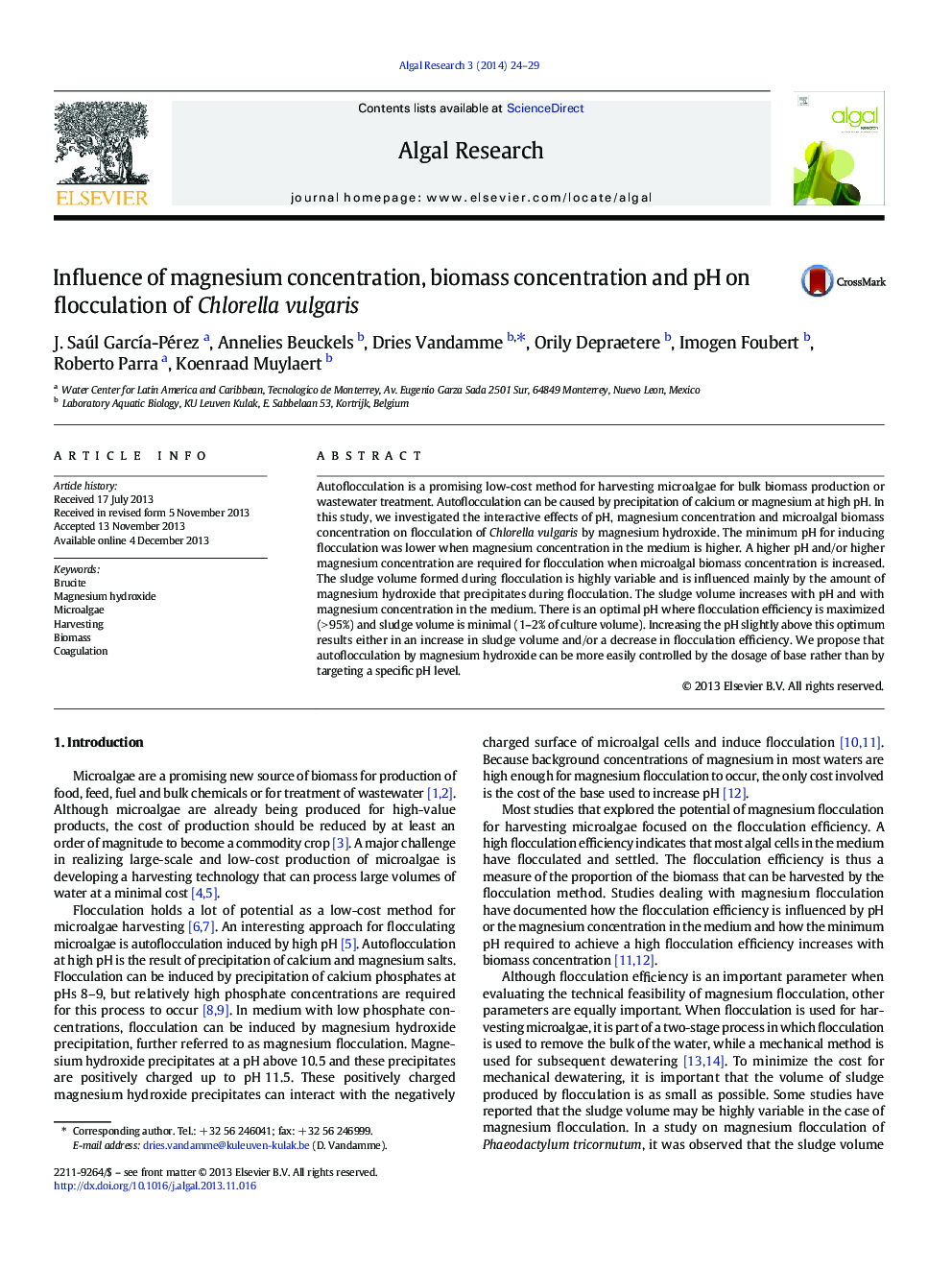| Article ID | Journal | Published Year | Pages | File Type |
|---|---|---|---|---|
| 1742133 | Algal Research | 2014 | 6 Pages |
Autoflocculation is a promising low-cost method for harvesting microalgae for bulk biomass production or wastewater treatment. Autoflocculation can be caused by precipitation of calcium or magnesium at high pH. In this study, we investigated the interactive effects of pH, magnesium concentration and microalgal biomass concentration on flocculation of Chlorella vulgaris by magnesium hydroxide. The minimum pH for inducing flocculation was lower when magnesium concentration in the medium is higher. A higher pH and/or higher magnesium concentration are required for flocculation when microalgal biomass concentration is increased. The sludge volume formed during flocculation is highly variable and is influenced mainly by the amount of magnesium hydroxide that precipitates during flocculation. The sludge volume increases with pH and with magnesium concentration in the medium. There is an optimal pH where flocculation efficiency is maximized (> 95%) and sludge volume is minimal (1–2% of culture volume). Increasing the pH slightly above this optimum results either in an increase in sludge volume and/or a decrease in flocculation efficiency. We propose that autoflocculation by magnesium hydroxide can be more easily controlled by the dosage of base rather than by targeting a specific pH level.
